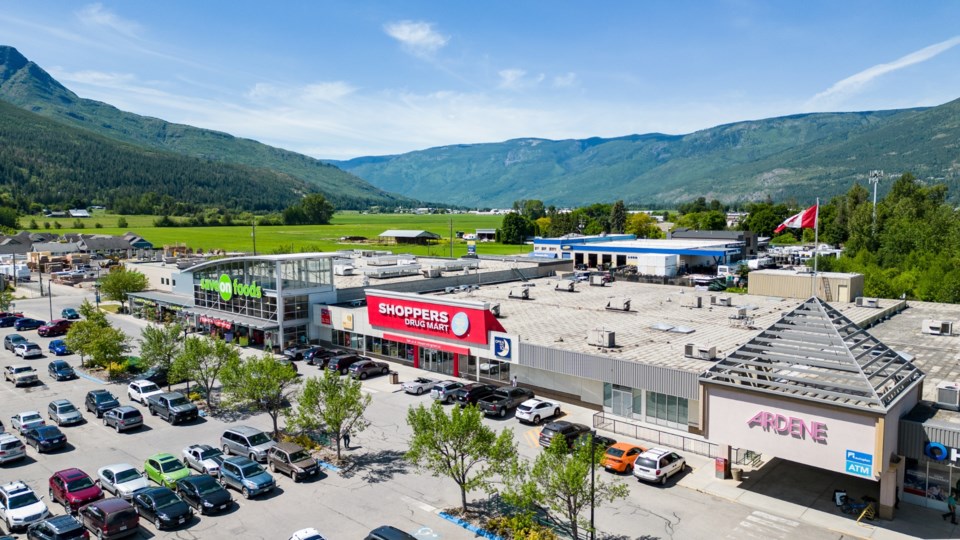Retail properties have led investment activity across B.C. over the past 18 months, and the boom recently hit Salmon Arm.
The Mall at Piccadilly, a 226,213-square-foot grocery-anchored shopping centre, sold May 23 for an undisclosed sum.
Built in 1977, the enclosed mall sits on 14.4 acres and has an assessed value of $28.5 million.
“The depth of interest we saw for Piccadilly Mall speaks to how retail is being re-evaluated in investors’ eyes,” said Curtis Leonhardt, managing director in the Vancouver office of Marcus & Millichap, which handled the sale in partnership with Cushman & Wakefield Ltd. “Daily-needs centres are outperforming, and investors – from institutional to private capital – are increasingly competing for assets like these that offer both stability and upside.”
Newmark Group Ltd. represented the purchaser, a private investor who has not been named.
Piccadilly drew significant attention from a broad range of buyers, including private investors, institutional groups, syndicated capital and off-shore entities. The competitive bid process resulted in multiple offers, with prospective purchasers including B.C.- based buyers, national firms from Eastern Canada and international investors.
“They’re rare to come up and when they do there’s lots of interest,” Leonhardt said of assets like Piccadilly, which boasts a strong roster of national tenants. Save-On- Foods, Shoppers Drug Mart, Canadian Tire, SportChek and Mark’s anchor the development.
“These five tenants contribute approximately 85 per cent of the property’s net operating income and 70 per cent of the total rentable area, reinforcing the stability and draw of essential, service-based tenancy,” Leonhardt said.
The mall also offers near-term opportunities for value enhancement through interior improvements and lease optimization among its mix of local retailers and professional services.
Piccadilly Mall has long been one of the dominant retail centres in Salmon Arm and Columbia-Shuswap region, serving a local population of over 20,000 and a regional base of more than 55,000. The property currently maintains an occupancy rate exceeding 97%.
Its location at 1151 10th Avenue SW is adjacent to Cascara, a new 140-unit rental building by WestUrban Developments Ltd., which ensures steady foot traffic.
The sale marks the first time the property has changed hands since 2013, when it was acquired by Standard Life from the Laird and Pukas families, local investors who had owned it since 1991.
In 2014, Manulife Investment Management acquired Standard Life’s operations in Canada for $4 billion. It listed Piccadilly earlier this year, as well as Cherry Lane Shopping Centre in Kelowna, as part of a strategic recalibration of its real estate portfolio.
Plans for Piccadilly have not been discussed publicly, but the sizeable land base such malls require makes them irreplaceable assets and prime candidates for densification.
Grocery-anchored malls offer stable cash flow in the current economic environment regardless, a key consideration as geopolitical forces dampen business investment. Next to multi-family, retail offers a consumer-driven investment rooted in fundamental needs.
Sales of retail assets in Metro Vancouver alone approached $350 million in the first quarter of the year, Altus Group recently reported. This was up 140 per cent from a year earlier.
Langley’s Willowbrook Shopping Centre was the largest retail deal this year to date, trading for $137 million in January.
The largest deal during the second quarter was Cottonwood Centre in Chilliwack, which sold for close to $120 million at the end of April.
Woodgrove Centre, an enclosed mall in Nanaimo, and Penticton Plaza, a grocery-anchored centre in Penticton, are also on the block, feeding the ongoing appetite for retail assets.



